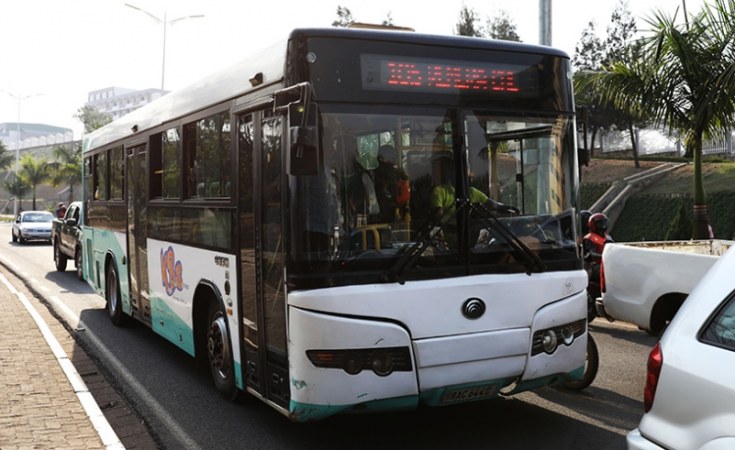Rwanda says it is investing in transitioning from internal combustion engine buses to electric buses, a move expected to cement her ambition of curbing pollutant emissions from road traffic.
Under the development, the government is looking to incentivise investors through reducing electric tariff for charging stations to the industrial tariff level, while electric vehicles parts, batteries and charging equipment are also exempted from import and excise duties.
According to Rwanda Environment Management Authority (REMA), carbon dioxide emissions from road transport account for 13 percent of the total emissions in Rwanda and the trajectory is expected to continue to rise.
Much as buses comprise only 15 percent of the total vehicles in Rwanda, they contribute approximately 40 percent of the total emissions from the transport sector.
Pearl Nkusi, Climate Actions Transparency Sector Specialist at REMA, told The New Times in an exclusive interview that these statistics increase the importance of transitioning to e-mobility as planned in the national climate action plan.
Nkusi said that the move also comes at a time when pollutant emissions from road traffic has also increased significantly in the City of Kigali leading to concern of poor air quality.
"In general, the e-mobility programme will contribute to an estimated reduction of 0.002 million tonnes of carbon dioxide equivalent by 2030," she commented, adding, "the mitigation potential of e-buses alone is yet to be estimated."
The average age of buses in Rwanda is nine years resulting in lower fuel efficiency (9.2l/100km) and higher emissions (220 gCO2/km.)
According to Rwanda Development Board, under non-fiscal incentives, bus operators and electric vehicle companies have also been allowed the use of rent-free, government-owned land for setting up charging stations.
Companies manufacturing and assembling electric vehicles (battery electric vehicles, plug-in hybrid electric vehicles, and hybrid electric vehicles) in Rwanda are also given other incentives in the investment code, such as 15 percent Corporate Income Tax (CIT) and tax holiday (irrespective of the investment value).
Costly initiative
According to Nkusi, an assessment report conducted by the Ministry of Infrastructure and the Global Green Growth Institute among other partners found out that the Capital cost (CAPEX) of an electric bus is almost 4 times the cost of an internal combustion engine (ICE) bus.
However, she said, the economic calculations showed that reducing by half the cost of battery and electricity would make electric buses have the same overall cost
"The assessment recommended an uptake of 20% electric buses by 2030," Nkusi reiterated.
Michelle De Freese, Senior Green Growth Officer, GGGI Rwanda, in a earlier report said, "the Global Green Growth Institute (GGGI) Rwanda Country Programme has been providing support to the Government of Rwanda to introduce electric buses - first within the City of Kigali, and eventually to other urban centers in the country."
As part of the technical assistance, GGGI supported 13 Government of Rwanda officials to complete training in electric bus system modeling and optimization.
The course equipped trainees with lectures, software to run simulations, and the theory to model energy use scenarios based on disruptions.
More about the electric bus
Electric buses are a new alternative to more traditional buses, but they are becoming a popular option for cities, private transportation companies among other institutions that want to take advantage of the technology.
According to Bloomberg New Energy Finance, at the end of 2017 there were 3 million city buses in operation worldwide; of these, 385,000 belong to the category of electric buses.
The largest electric bus order so far was signed in December 2020 and sees Chinese brand Yutong deliver as many as 1002 buses to the Qatar public transport company, Mowasalat, that will provide commuting services in the upcoming FIFA World Cup Qatar 2022.
An electric bus draws electricity from the power grid and stores it in a battery that can be recharged once the electricity has been used up.
More precisely, when the bus driver's foot presses on the accelerator, the battery powers the motor, which also powers the gears that rotate the bus' tires.


